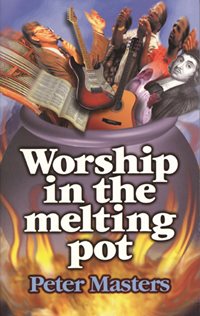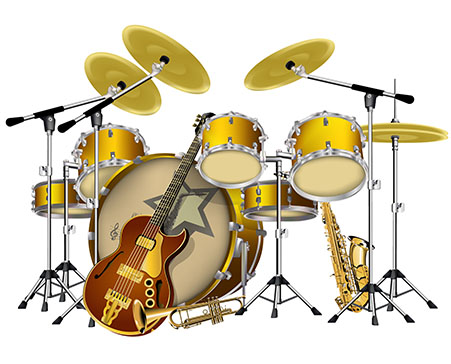Many Christians today are amazed when you show them what really happened in the Old Testament, and then they feel cheated over the superficial ideas they have been sold. They become deeply thoughtful on hearing the definitions of worship given by the Saviour, and on seeing all the practical instructions of the epistles.
Worship is truly in the melting pot. A new style of praise has swept into evangelical life, shaking to the foundations traditional concepts and attitudes. The style of worship followed throughout the entire history of Bible–believing churches has been shunted on to the sidelines – and why not? Young friends are asking – ‘What’s the matter with contemporary music groups? Isn’t there every kind of instrument, including percussion, in the Psalms? Didn’t they dance in worship in Bible times? Isn’t God the same yesterday, today and for ever? Why should we be tied to gloomy Victorian culture in our praise to God?’
The aim of this article is to answer such questions, and also to focus on the four great pillars of worship – the principles which the Bible insists on. Are these in our minds when we think through our style of worship?
Many Christians today are amazed when you show them what really happened in the Old Testament, and then they feel cheated over the superficial ideas they have been sold. They become deeply thoughtful on hearing the definitions of worship given by the Saviour, and on seeing all the practical instructions of the epistles.
Our approach to worship is undoubtedly the most important issue confronting Bible churches today, and here is why. Six new, highly flawed styles of worship may be observed –often all mixed together. There is personal-pleasure worship, which puts the worshipper’s enjoyment in first place, rather than God’s desire. There is worldly-idiom worship, which borrows the current entertainment music of the world with its rhythms, instruments, actions and showbiz presentation, heedless of all the Bible’s warnings about loving the world. There is aesthetic worship, which imagines that orchestras, bands and instrumental solos are real expressions of worship, as if God is worshipped through these things, whereas Christ said – ‘God is a Spirit: and they that worship him must worship him in spirit and in truth.’ There is ecstatic worship, in which people work themselves into highly emotional and even semi-hypnotic states, whereas Scripture says that we must always pray and sing with the understanding. There is shallow worship, which reduces hymns to choruses conveying one or two elementary ideas, because solid spiritual themes are not wanted. There is informal worship, in which casual, jokey, trivia-injecting leaders turn churches into sitting rooms, so depriving the Lord of dignity, reverence, grandeur and glory. It is as though evangelical churches have caught six viruses at the same time. How can churches survive if their highest occupation is sick? How can God’s people keep themselves unspotted from the world, if the world has taken over the worship? How can we call lost souls out of the world, if we are the same as the world? Worship is certainly the most important topic of the hour.
In this book I would like to speak with great respect to fellow pastors and church officers who may be inclined to adopt some elements of new worship. There are numerous dedicated Gospel workers who have come to feel that they should give guarded partial acceptance to this trend. They may not care for it personally, but they have been persuaded that their reservations are merely a matter of taste and culture. To get people into youth meetings and churches (says today’s wisdom) we must employ contemporary worship songs.
Another suggestion is that we should introduce some of the new alongside the old, thus preserving the best of traditional worship. The problem with this proposal is that the old and the new represent opposing concepts of worship, as these pages will show. The new breaches all the biblical principles recovered at the Reformation. Even the history of new worship rings alarm bells, and demonstrates the chasm between the old and the new.
The development of new worship is now fairly well known, and can be sketched here in a few sentences. It mainly began in California in the late 1960s, when many hippies turned to Christ, becoming known as the ‘Jesus people’. They worshipped with the very same style of song which they had known as hippies. Various Christian movements were formed to encourage them, among them the well-known Calvary Chapels. Their worship consisted mostly of one-verse chor-uses, endlessly repeated. The words were simple – much simpler even than those of a traditional children’s chorus – and the themes also were elementary. There was seldom any confession of sin or any doctrine. However well-intended it may have been, the new worship was not shaped or influenced by any biblical model of worship, nor by the general practice of Bible-believing churches up to that time.
It was a form of worship fashioned and conceived in the womb of meditational mysticism, in which hippies in their hundreds and thousands would sit on Californian hillsides with eyes closed, swaying themselves into an ecstatic state, echoing their previous experience with drugs. Former hippies carried into their new Christian allegiance the same quest for emotional sensation to which they were accustomed, and, sadly, none of their Christian mentors showed them a better way.
This new approach to worship rapidly advanced, merging with another new stream of ‘Christian’ songs written by those who simply wanted worship music to be like secular rock music. In other words, the latter wanted a ‘good time’ in a worldly sense. We need to be aware that new worship sprang from these two stables, namely, hippie mysticism, and worldly Christianity. It was immediately incorporated into the charismatic movement, from which the vast majority of new worship songs have come. Such background information should lead us to great caution, but the biblical principles of the following pages should be the decisive factor in whether we accept or reject the new ways. We certainly cannot blend opposing concepts.
 This extract comes from Worship in the Melting Pot by Dr Masters Contents:
This extract comes from Worship in the Melting Pot by Dr Masters Contents:
Worship in the Melting Pot
Spiritual or Aesthetic Worship?
Rational or Ecstatic Worship?
Sacred or Profane Worship?
Let the Lord Define Worship
Brass, Strings and Percussion?
Services of Worship in the Bible
What Really Happened at Corinth?
Why Raise Hands?
When Hymns Were Born
Standards for Worthy Hymns
A Gift Most Rare
Reverence in Worship
© 2002 by Dr. Peter Masters. Metropolitan Tabernacle. Published in the UK, used with permission.

